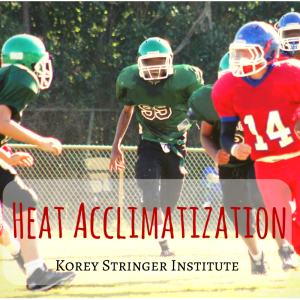Update: The Mission-KSI Heat Safety Pledge for high schools is well underway! We’ve had over 15 schools qualify, with several more applications in the works. Get your school on the list to get some great cooling products from Mission Athletecare!
Congratulations to Marshwood High School in Maine, which was the first school accepted. We have also accepted schools from Alabama, Arkansas, District of Columbia, Florida, Maine, Maryland, Massachusetts, New Jersey, North Carolina, Ohio, Tennessee, and Texas.
A little background on the Heat Safety Pledge: Mission Athletecare prides itself on creating the best athletic environment for performance and safety. As part of that goal, they wanted to find a way to reward schools for upholding appropriate policies for heat safety. Mission wants to donate $1 Million of product to schools nationwide who are striving to keep athletes safe.
And this is where KSI comes in. Mission masterminds, with the help of KSI of course, devised the Heat Safety Pledge, 6 pillars aimed at safety while exercising in the heat. We feel that these are the 6 key areas that help high schools athletes perform at their best and stay safer while exercising in the heat.
- Pillar 1: Thermometer– A wet bulb globe thermometer is on site at school and used to determine activity modifications based on environmental conditions. It is school policy to modify work to rest cycles based on environmental conditions.
- Pillar 2: Certification– All coaching staff is certified in first aid, cardiopulmonary resuscitation and the use of an automated external defibrillator. Additionally, education is provided related to preventing sudden death in sport.
- Pillar 3: Athletic Trainer– An athletic trainer is employed at your school and is on-site during practices and events.
- Pillar 4: Emergency Action Plan– A specific emergency action plan for each athletic facility has been developed where sports games and practices occur. This plan is reviewed with the healthcare team every year.
- Pillar 5: Heat Acclimatization Guidelines– School has adopted nationwide high school preseason heat acclimatization guidelines set forth by the National Athletic Trainers’ Association.
- Pillar 6: Water Stations/Body Cooling- Adequate water is available and placed at various stations around the athletic fields for all sports. At water stations, body cooling is standard practice. This can be as simple as encouraging players to remove equipment during rest breaks as using ice/cold towels.
Some of the pillars of the heat safety pledge require little funding, emergency action plans for example; and can be implemented right away! Appropriate heat acclimatization is regulated by some state athletic associations, so if your state meets the KSI heat acclimatization standards, you already satisfy one of the pillars. But even in states without good guidelines, appropriate heat acclimatization procedures cost no money and can prevent heat illness.
On the same note, we’re talking to YOU high school athletic trainers, your employment helps satisfy one pillar as well. What a way to get some much needed supplies for your school! Take a look at the Heat Safety Pledge today to see if your high school qualifies. If you’re unsure, use the KSI Prevention section for more information on common practice standards. Contact Mission for more information on how to apply.




